Thursday night, June 20! A special occasion will be nationally televised on Fox. In a Tribute to the Negro Leagues, the Cardinals and Giants are playing a regular season game at Rickwood Field in Birmingham, Alabama.
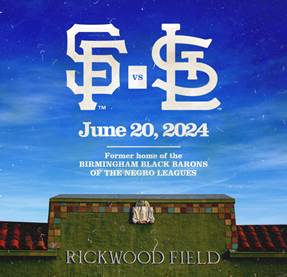
In 1909, Rick Woodward purchased the Birmingham Barons, a white minor league team. The next year, he built Rickwood Field to showcase his team.
In 1920, the Birmingham Black Barons of the Negro Leagues began play at Rickwood. It was customary in those days for white and Negro League teams to share stadiums to help with the costs of operation (in Kansas City, the minor league Blues and Negro League Monarchs had a long co-tenancy).
It was not unusual for a Negro League team to adopt the same name of the white counterpart in a city (e.g., the New York Black Yankees). The most incongruous was Atlanta where the team names were the “Crackers” and the “Black Crackers.”
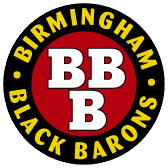
In 1948, with young Willie Mays in the lineup, the Black Barons played against the Homestead Grays in the final Negro Leagues World Series. Today, Rickwood is the part-time home of the current minor league Barons, making it the oldest professional baseball park still in use. Fenway opened two years later (1912), followed by Wrigley (1914).
As part of the promotion for the game, Fox Sports and Fanatics Collectibles were in Kansas City last month to unveil a giant trading card at 19th and Paseo (next to the old YMCA where the first Negro League was founded in 1920). The giant card honoring Satchel Paige is 24’ by 16’ and weighs 8,000 pounds. Paige was born in Mobile, Alabama, and played his first four Negro League seasons with the Black Barons at Rickwood Field (1927-1930).
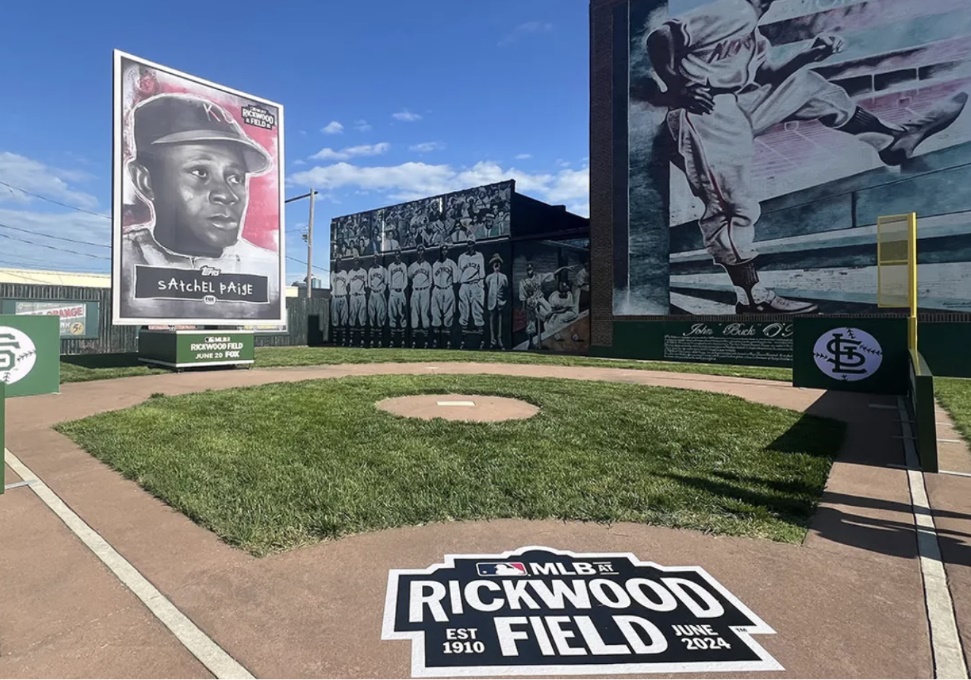
Similar cards honoring Josh Gibson, Jackie Robinson and Willie Mays have been installed in other cities leading up to Thursday night’s game at Rickwood.
The Birmingham A’s – A Kansas City Connection to Rickwood: Although Jackie Robinson had broken the MLB color line in 1947, many minor league teams in the south remained segregated. Under local Jim Crow practice, Black fans attending Barons games were required to sit far from home plate behind chicken wire – some whites called it the “coal bin.” The policy was reversed for the few white fans who came to Black Barons games.
In 1961, MLB decreed that all minor league affiliates would be required to integrate. This would not work in Birmingham under an ordinance known as the “Checkers Rule”: “It shall be unlawful for a Negro and white person to play together or in company with each other in any game of cards, dice, dominoes, checkers, baseball, softball, football, basketball or similar games.”
Birmingham declined to change its ordinance, causing the Barons to fold before the 1962 season. This was fine with the infamous Bull Connor who was the public safety commissioner for the city. Connor had been the play-by-play radio announcer for the Barons in the 1920s and 1930s, and his booming voice prompted the fans to nickname him “Bull” (his given name was Theophilus Eugene). In 1963, Connor would become best known for unleashing water hoses and dogs on civil rights protestors.
Connor ran for mayor and lost, and a new city council rescinded the Checkers Rule, hoping to lure an MLB affiliate. Former Barons owner Albert Belcher was willing to risk fielding a team. Major league teams were hesitant, but in a lucky turn, Charlie Finley was a native of Birmingham. He had even been a batboy for the Barons. Finley wanted to help his hometown, so Belcher’s Barons became an affiliate of the Kansas City A’s, commencing play at Rickwood Field in 1964.
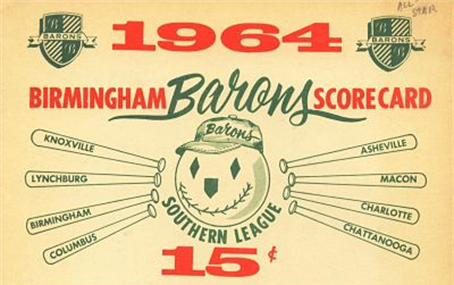
The 1964 Barons were the first integrated professional team in Alabama. For the fans, the chicken wire came down, and all fans shared the same restrooms and water fountains (many for the first time). But it was an island in the city. Jim Crow prevailed in all other venues, like hotels and restaurants where a young Reggie Jackson was not welcome (Finley had to persuade Jackson to accept the assignment to the Barons).
The Barons played in Birmingham in 1965, moved for a year to Mobile (where the team’s name was changed to the A’s), then back to Birmingham in 1967, keeping the A’s name rather than reverting to the Barons.
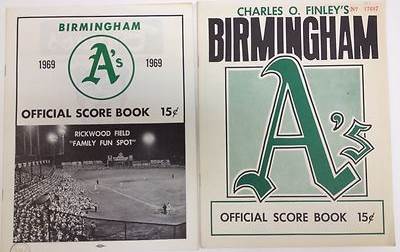
Meanwhile in Kansas City, the major league roster was growing stronger with prospects moving up from Birmingham. By 1967, this included Campy Campaneris, Blue Moon Odom, Paul Lindblad, Catfish Hunter and Sal Bando. Reggie Jackson, Joe Rudi and David Duncan were called up late in the season.
And then in 1968 the A’s moved to Oakland. Finley’s savvy recruiting of players who passed through Rickwood Field led to three World Series championships (1972/1973/1974). Fun for Birmingham fans. Fun for Oakland fans. Not so much for Kansas City fans who never got a winning season from the A’s (1955-1967).
But Ewing Kauffman and Cedric Tallis were on the way to change that…
Kansas City Royals – New Hall of Famers: In March this year, the Royals announced three new members for the Royals Hall of Fame. The induction celebrations will be next week at Kauffman Stadium. Cedric Tallis and John Schuerholz on Friday, June 28, and Bo Jackson on Saturday, June 29. Fans also get fireworks on Friday and a Miller Lite Hawaiian shirt on Saturday.
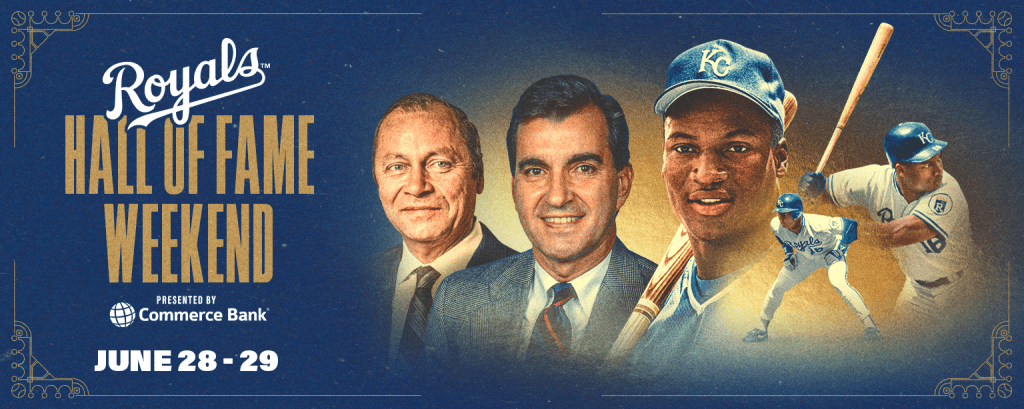
Cedric Tallis: After Charlie Finley fled to Oakland, Kansas City started fresh with the expansion Royals in 1969. Owner Ewing Kauffman hired Cedric Tallis as his first general manager, and the results were superb. The Royal displaced the A’s as the top team in the AL West, and primary credit goes to early decisions made by Cedric Tallis.
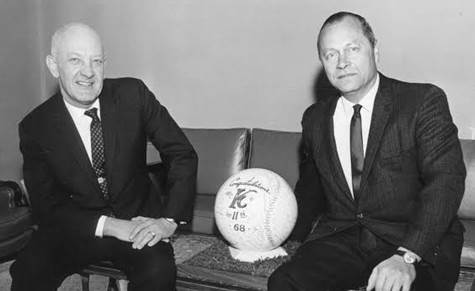
Among the players acquired by Tallis during his tenure (1969 to 1974) were Paul Splittorff, Al Cowens, Amos Otis, Frank White, Cookie Rojas, Fred Patek, George Brett, Steve Busby, John Wathan, John Mayberry, Dennis Leonard, UL Washington, Hal McRae and Willie Wilson.
Unfortunately, the working relationship between Kaufman and Tallis broke down, and Tallis was fired in 1974 (days after signing Willie Wilson). But his legacy paid big dividends. The team won the AL West in 1976, 1977 and 1978, and the players Tallis acquired were the core of the teams that won a pennant in 1980 and a World Series in 1985.
For the year-by-year details on how Tallis assembled the roster through the draft, free agency and trades, see Hot Stove #213. Cedric Tallis died in 1991.
John Schuerholz: Cedric Tallis also assembled a strong front office, and a good example was John Schuerholz who joined the team as an administrative assistant in 1971. Schuerholz rose through the ranks and was named general manager in 1981.
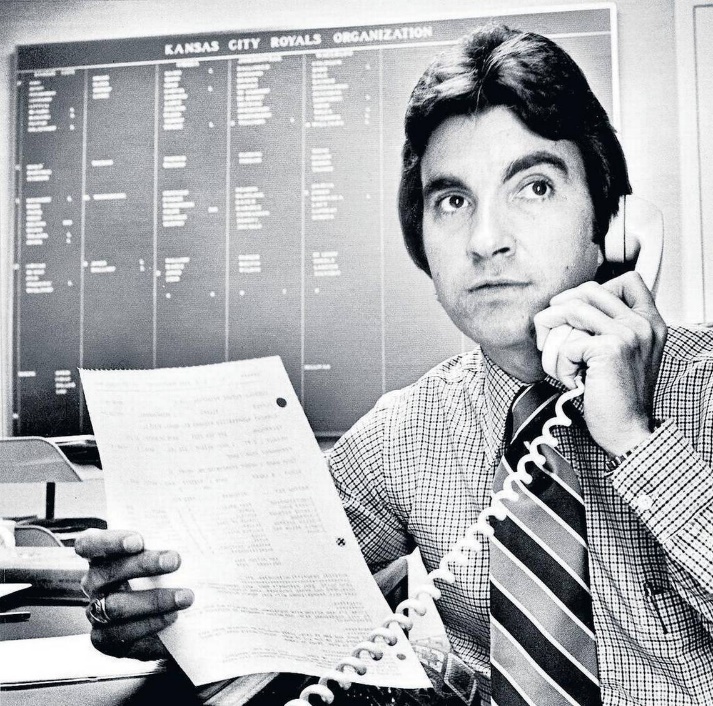
Schuerholz inherited the solid foundation originally created by Tallis (George Brett, Frank White, Willie Wilson and Hal McRae) and added his own touch with key young talent, especially pitchers Bret Saberhagen, Danny Jackson and Bud Black. This blend of veterans and youth brought a World Series championship to Kansas City in 1985.
In 1990, Schuerholz left to become the general manager of the Atlanta Braves where he had remarkable success. From 1991 to 2005, the Braves won 14 division titles. They won the World Series in 1995, making Schuerholz the first general manager to win a World Series in both the AL and NL. In 2017, he was inducted into the National Baseball Hall of Fame.
Schuerholz made another contribution to Royals history. His talented Atlanta front office included protégé Dayton Moore who worked his way up from scout to assistant general manager. In 2006, Moore left the Braves to become general manager of the Royals, leading the team to two pennants and a World Series championship.
Bo Jackson: In 1986, while still with the Royals, John Schuerholz took a recommendation from his staff to risk an amateur draft selection on Bo Jackson (4th round). Although Bo had excelled in college baseball at Auburn, his Heisman Trophy win indicated a pro football career. But being Bo, he did both and became the only pro to be an all-star in two major sports.
Bo played four full seasons with the Royals (1987-1990), hitting 20+ home runs each season. In those same four seasons, he was a star running back for the Oakland Raiders. In January of 1991, he badly injured a hip in an NFL playoff game, ending his football career and his time with the Royals.
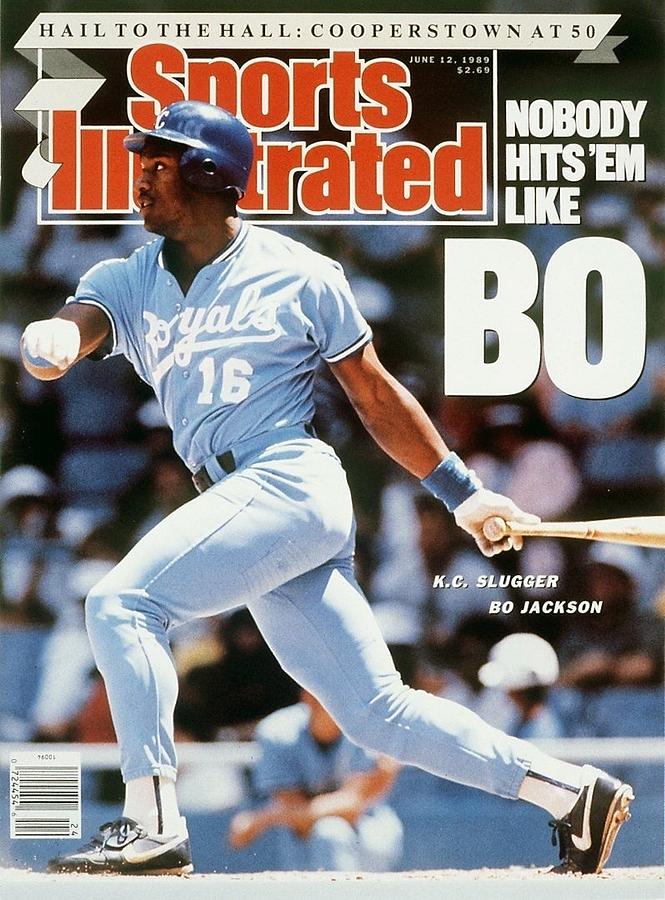
Bo made comeback attempts with the White Sox and Angels but retired from baseball after the strike-shortened 1994 season. [Birmingham Trivia: When Bo was with the White Sox, he played four games for their AA minor league team, the Birmingham Barons.]
It was a short baseball career, but Bo left a lot of highlights that must be seen to fully appreciate. Check out these videos: Running up a wall to avoid injury (click), inside-the-park home run (click), breaking bats after striking out (click), cannon arm (click), All-Star game homer with President Reagan and Vin Scully broadcasting (click), and home runs in four consecutive at bats (click). Plus the “Bo Knows” Nike ads (click).
George Brett on Bo: “He was a great teammate and probably the most exciting player I ever played with. You’d see things that no other human could do on a baseball field or a football field. He’s one of the greatest athletes of our time, and it’s an honor to welcome him to the Royals Hall of Fame, where he belongs.”
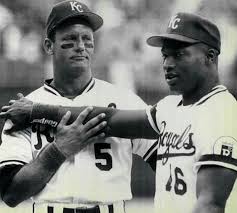
Better Late Than Never: Why did it take so long for Cedric Tallis to gain entry to the Royals Hall of Fame? He is clearly at the top of the list for turning an expansion team into a contender. The fact that he was fired no doubt gives a clue. But a lot of years passed, and many sportswriters have lobbied on behalf of Tallis (e.g., Joe Posnanski, Vahe Gregorian and, on many occasions, Bradford Lee of Royals Review).
In the case of John Schuerholz, he made it to the National Baseball Hall of Fame before gaining local recognition. When Schuerholz was inducted at Cooperstown in 2017, KCUR’s Greg Echlin posted a piece questioning why Schuerholz and Cedric Tallis were not in the Royals Hall of Fame. Greg’s closing line: “Maybe someday soon Schuerholz and Tallis will receive their long overdue recognition in Kansas City.”
Finally, it happened. What changed? I’m guessing the new ownership of the Royals brought this out for a fresh look. Kudos on the result.
Lonnie’s Jukebox – James Taylor Edition: On June 5, the eve of our 43rd anniversary, Rita and I attended the James Taylor concert at Starlight Theater. Joining us were Cheryl Dillard and our “Uber driver” Pat Titterington who took this selfie. We gave driver Pat five stars, but with the caveat that he likes following his urban bike routes rather than roadways more familiar to us.
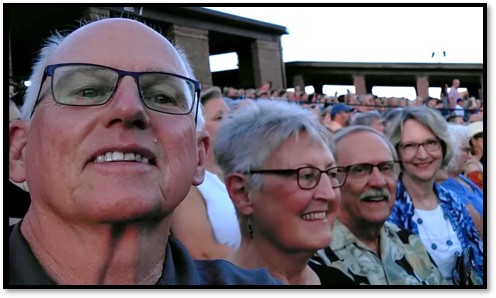
The concert was sold out, and it was gorgeous evening. Starlight was a perfect venue and continues as a Kansas City gem.
The songs below were on the Starlight setlist, and all were written by Taylor unless otherwise indicated.

Early in the first set, Taylor sang a Buddy Holly cover…
“Everyday” (1985). Taylor’s is a fine version, but I’m partial to the one from my high school days, “Everyday” by Buddy Holly (1957).
“Sweet Baby James” (1970). Title song to his 1970 album.
“Don’t Let Me Be Lonely Tonight” (1972).
“Carolina on My Mind” (1969).
“Mexico” (1975).
“Fire and Rain” (1970).
My photo from the cheap seats. Correction. There were no cheap seats.

Taylor played two songs written by Carole King. Taylor and King became friends early in their careers and in 1970 performed together at the Troubadour in Los Angeles. They were both working on albums at the time and played backup for each other on some of the tracks. Most famously…
“You’ve Got a Friend” (1971). This is one of the songs written by King for her blockbuster album Tapestry, and Taylor played guitar in the recording session. He asked King if it was okay for him to record the song for his own album, and she said yes. Taylor also released a single, and it went to #1, his only single to top the charts. At the concert, Taylor said that when he recorded the song, he did not realize he would be playing it every night for decades.
“Up On the Roof” (1979). Written by King with her songwriter husband Gerry Goffin in 1962 for the Drifters who took it to #5 (that version here).
In 2010, Taylor and King teamed up for a Troubadour Reunion Tour, celebrating the 50th anniversary of their 1970 shows at the club. The 57 dates on the tour included a stop in Kansas City on May 21, 2010, at what was then called the Sprint Center. Rita and I were at the show, and it was awesome. Two of the best singer-songwriters chatting back and forth and singing classics. The stage was set up in-the-round (like the one shown below from Madison Square Garden). Click here for a short take on the show.
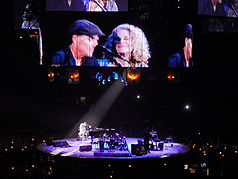
Toward the end of the Starlight concert, there were a couple of songs that felt like anniversary messages from me to Rita.
“How Sweet It Is (To Be Loved by You)” (1975). This #5 hit for Taylor is a cover of a song written by Motown’s songwriting team Holland-Dozier-Holland for Marvin Gaye (a #6 hit in 1964; click here).
“Your Smiling Face” (1977). Below, a sample of the smiling face. At last week’s Rainy Day/Truman Library book event with Doris Kearns Goodwin.
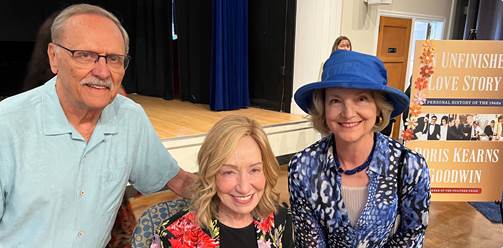
We loved the concert at Starlight, as did the reviewer at the Pitch (click here). The review includes coverage of Taylor’s engaging banter with the audience between songs.
The Pitch also had these good photos by Earnest Douglas…
Taylor has assembled an excellent group of musicians, and the tour is titled “James Taylor and His All-Star Band.”
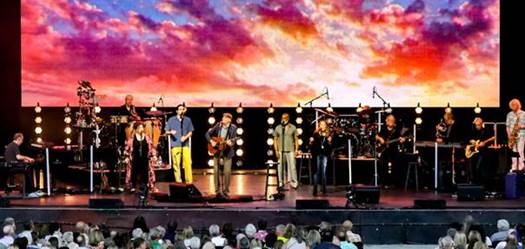
The backup singers included Taylor’s son Henry (the big guy in the yellow pants).
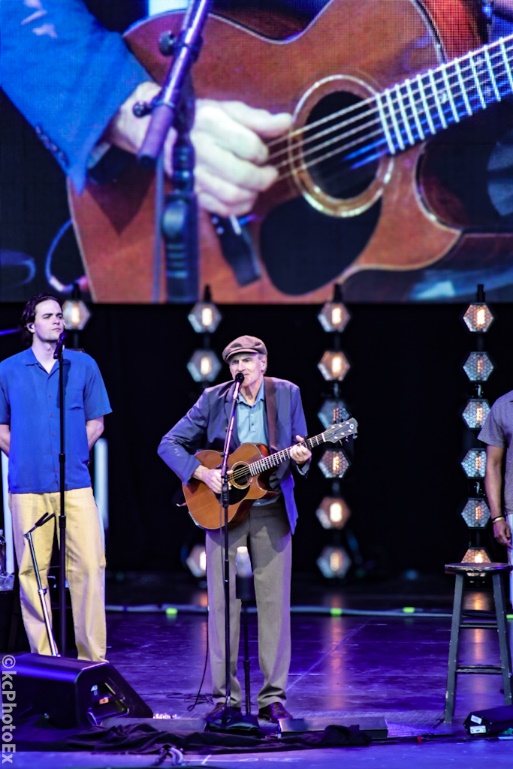
I’m including this crowd shot from the Pitch because it’s so easy to spot Pat Titterington (center-right).

Loose Park Update: Seen during our walks over the last few weeks – many new inhabitants at Loose Park.


Chipmunks usually scamper away too fast, but this one stopped long enough for his closeup in Hot Stove.
